News
19 September 2022
Floodplain heroes – Bringing biodiversity back
Meet John Toll, a fourth-generation farmer working to bring biodiversity back to his Gunbower farm by planting trees and native vegetation and creating a fully functional wetland. John is one of the many community members that have given up their time to help shape these projects through our community reference groups.
Tell me about your property at Gunbower
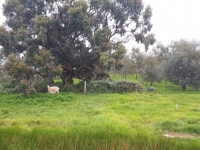
Wiltipoll sheep in front of an older Black Box tree at Circle T Farm (Photo: John Toll)
Circle T is a sheep farm next to Gunbower Forest. We breed Wiltipoll sheep – they’re a low-maintenance breed that doesn’t need shearing.
It’s a large irrigation property with all 800 hectares irrigated from the Murray River via the Torrumbarry irrigation system, with irrigation schemes dating back to the 1930s and 40s. Since drought times and the separation of the water and land, we now selectively irrigate.
My family has been here a long time – my great-grandfather grew up on this property. But when I was growing up, we didn’t realise how important it was to have native trees and vegetation on the property. Over the past 25 years, I’ve been learning more and more about how to work with nature to bring back biodiversity.
We also have a block where we grow native flowers, which my daughter sells through her business, Zoe’s Little Flower Farm.
What type of vegetation have you planted at your property?
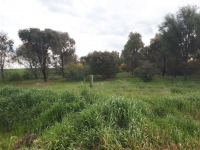
Part of the Circle T wetland (Photo: John Toll)
In the early 1970s, we found some salinity in the soil, so we decided to start planting trees. We’re on the Patho Plain which is historically a fairly treeless area. You get small clumps of black box and a few red gums generally generated in depressions.
We’ve tried to replicate that and plant the trees in corridors which is very beneficial for the survival of plant species we put in there. It also provides protection from southerly winds. We’ve now got a range of species including wattle, eucalypts, black box and native grasses.
We’ve got a natural depression running though the property which is where we’ve revegetated to create a wetland. The Murray Darling Wetlands Working Group visited last year and agreed to deliver environmental water to the wetland when needed to keep the aquatic plants going. They’re now monitoring the health of the wetland. We’ve got lots of frogs and some small fish in the wetland.
What have you observed from delivering water to your property and wetland?
Over the ten drought years, we got used to minimal rainfall and it taught us to manage our allocated water more thoughtfully.
I prefer a defensive approach to providing water. Artificial flooding can come undone if nature has a hand in it because there can be too much water. We lost a lot of black box trees during the big floods in the mid-70s, which is when we realised that overwatering black box trees can kill them. We don’t need to use allocated environmental water if nature is already doing the job.
When we first planted trees, we planted them close together thinking we would lose a lot of trees. After the drought, we did lose some trees, but now we plant with twice the distance between trees – we now know they like some space to live in.
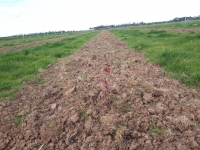
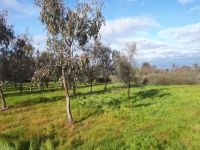
Before and after – a recently planted baby gum tree on the left and a 20-year-old gum tree on the right (Photo: John Toll)
We know a lot more now about working with nature and not against her. I’m still learning but I know that you can’t outsmart nature.
Our job as farmers is to grow food. It’s an important job. You don’t need to fill your whole farm with trees, but 10% is good and makes a big difference to biodiversity.
Why did you get involved in the Gunbower SAG?
Gunbower forest is a unique forest. With my experience using water to stimulate tree growth and general farming, I thought instead of criticising, I better get involved and have some input. In drought years you need artificial watering, but we need to make sure it’s done as thoughtfully as possible alongside nature.
What are your hopes for the future of Gunbower Forest?
A lot more of the forest is being turned into parkland. Provided it’s managed carefully, it will give us some spectacular areas to visit and camp in the future.
It’s fascinating to see what you can do when you start learning about biodiversity and nature. It’s pretty special.
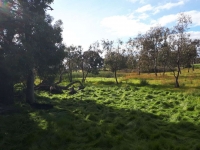
More trees in the natural depression (Photo: John Toll)
Circle T is a 4th generation property located next to Gunbower Island State Forest. It is a sustainability focused property where a large amount of effort has been invested in native biodiversity plantations to create a landscape that both simplifies animal husbandry and beautifies the property.
John sits on the Gunbower Stakeholder Advisory Group. These groups have broad community and landholder representation giving us a diverse local perspective on various aspects of project delivery, such as technical studies and our communications and engagement approach.
Subscribe below for more news
We ask for your personal information so we can send you relevant updates. See our privacy statement.
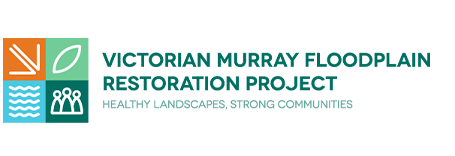


 Chris Tzaros@Birds Bush and Beyond
Chris Tzaros@Birds Bush and Beyond